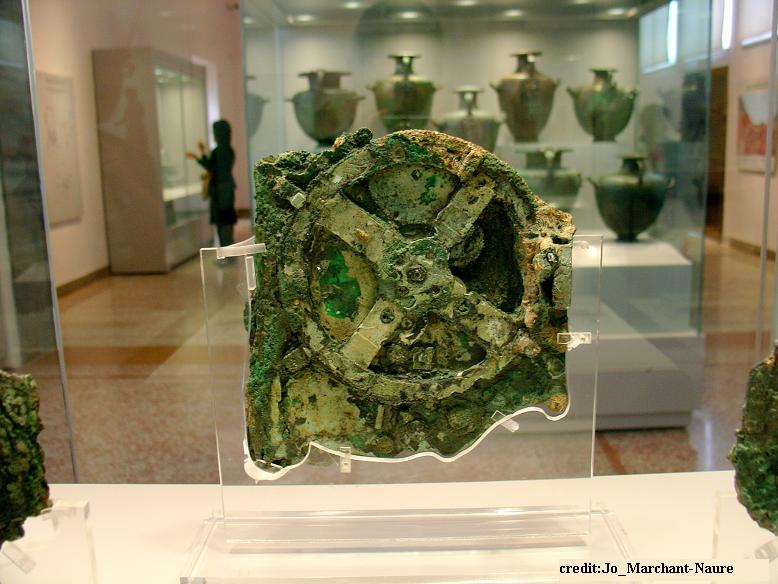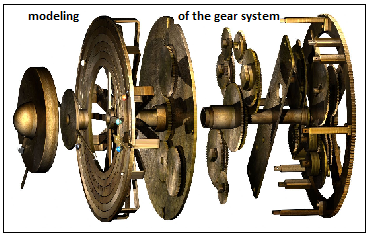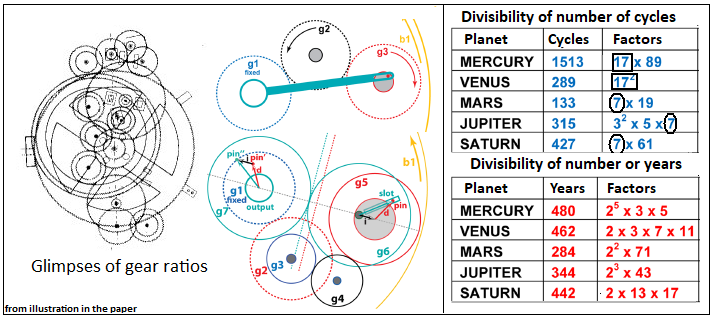The marvels of a desk-top cosmos from ancient times - S.Ananthanarayanan.
A shipwreck off the coast of Lebanon, discovered in 1901, yielded a treasure of unparalleled ingenuity, dated to the second century BCE.
This was the Antikythera Mechanism, an artifact found 42 metres under, near the island of Antikythera, along with others. The German philologist Albert Rehm identified the corroded object as an astronomical calculation machine, but nothing more could be made out. Till, between the 1950s and 1970, science historian Derek de Solla Price used X-ray and gamma ray radiography to identify the article as a complex, gear driven, astronomical calendar!
The modest, ‘dictionary size’ object contains 30 different gears wheels, in bronze, and a mechanism that interconnects them, to display the positions of the sun and the moon, following the then known cycle – the Metonic cycle, a pattern of phases of the moon, that repeats after nearly nineteen years. And then the Callippic cycle, which is four Metonic cycles, less a day, to keep the moon phases in step with the apparent movement of the sun. With an input of past or future dates, turning a crank could calculate the positions of the sun, moon and the five planets then known, at different times. Even lunar and solar eclipses could be predicted, and this was using the Saros cycle, which describes the recurrence of eclipses, over a period of 6,585.3 days.

What lay behind the mechanism, however, remained unclear. Till, in 2006, microfocus X Ray tomography – building a 3-D image of the object, followed by ‘slice by slice’ X-Ray analysis scans, partly revealed the structure of the corroded and rust-covered mechanism. It also uncovered inscriptions, thousands of characters of text, that pointed to the motions of the sun, the moon and the planets, and how they were displayed by the mechanism. This detailing of the things the device could do provoked ideas of how the device may work. But the internals or the working of the device could not be meaningfully picturized.
Tony Freeth, David Higgon, Aris Dacanalis, Lindsay MacDonald, Myrto Georgakopoulou and Adam Wojcik, from University College London at London and Doha and the Cyprus Institute at Nicosia, describe in the journal, Scientific Reports, how they grappled with all the data, with the level of astronomy understood in ancient Babylon and available to the Greeks, to finally work out how the ingenious contraption could display the movements of all five planets. “Our challenge was to create a new model to match all the surviving evidence. Features on the Main Drive Wheel indicate that it calculated planetary motions with a complex epicyclic system (gears mounted on other gears), but its design remained a mystery,” the paper says.
How they went about it is no less than mathematical detective work, to fill in details of a complex, but unknown scheme of clockwork, based on bits and pieces of information. A useful lead, the paper says, came from the inscriptions in the ‘back front covers’ of the device. The back cover described the front face as a system of rings representing the sun and the planets, while the front cover listed out the rhythmic patterns of the movements of the planets (and the moon) and the sun, and the periodic cycles the planets followed.

The paper considers that relative periods could be expressed by pairs of gears which had numbers of teeth in the correct ratio. The paper surveys the theories and conjectures, of the time, to explain how planets moved, sometimes forward, sometimes backwards, as seen from the earth. As the Greeks believed the Earth to be the centre of the system, the movements were complex, described in terms of epicycles, or turning circles that moved around a larger circle. What the system of gears could model such motion? Finally, a step was taken forward, the paper says, when “surprisingly complex periods for the planets Venus and Saturn” were observed in the X-Ray imaging. If how these were worked out could be understood, could the team do the same for the other planets?
A known feature in the case of Venus was that the planet went through five cycles of movement every eight solar years. While this could be readily represented as a gear ratio, the ratio itself was approximate. The Babylonians had worked out a better ratio, at 720 cycles in 1,151 years, but this ratio was not practical, as 1,151 teeth were too many for a gear to have. “Then came a notable discovery in 2016,” the paper says, of the numbers, 462 and 442, in respect of Venus and Saturn. In place of 720/1,151, the number 462 yields a ratio, 289/462, which is very nearly the same as 720/1,151. And there is a similar ratio, 427/442, for Saturn. And, significantly, these numbers, unlike 1,151, which is a prime, have whole number factors. The number 289 is nothing but 17 x 17, while 462 is 2 x 3 x 7 x 11. And in the case of Saturn, 427 = 7 × 61 and 442 = 2 × 13 × 17.

As for how the numbers, 462 and 442 had been arrived at, the paper finds that it was by a method called the Parmenedes Proposition. This is a mathematical device to improve an approximate ratio. To find the ratio: 22/7, for the value of π, for instance, we could start from the knowledge that the ratio is more than 20/7 but is less than 23/6. Then, we add the numerators and denominators, like this: (20+23) / (7+6) which is 43/13, or 3.3. As we know that this is still too high, we can repeat the process, as (2 x 20 + 43) / 2 x 7 + 13), which is 83/27, or 3.07, which is closer to 22/7.
The paper shows how this method could yield the numbers for Venus and Saturn, and an adaptation to provide possible ratios for the remaining planets. While the ratios are accurate and practical, they are chosen to have a feature of economy – ratios for Mercury, Mars and Jupiter are seen to include factors, like 7 and 17 – allowing a 51-tooth gear to work for both Venus and Mercury, and a 56-tooth gear for the remaining planets and the Sun.

The line of thinking shows the way to an optimum gear design, which corresponds to the holes and posts, for spindles or gears, and what could be a reconstruction of the ancient marvel! The complexity suggests that Greek technology was far more advanced than previously thought. The precision has been compared to that of 18th century watchmakers. The design is astonishing. No other civilisation is known to have created anything as complicated for another thousand years.
Where did it go?
If Greece had such ability so early, why did the industrial revolution have to wait so long? It seems that the device found in 1901 was not the only one of its kind. Cicero has spoken of a similar device built by Archimedes in the 3rd century BC and another one by PosIdonius (2nd and 1st century BC).
The technology appears to have been communicated via the Arab world, as suggested by a device dated in the 6th century, and Islamic calendar computers of the 13th century. Much of modern technology has its roots in the mechanical toys of the 18th century and the earlier tradition of clock-working. And the clock-working too, like many things of our world, is of Greek origins!
------------------------------------------------------------------------------------------ Do respond to : response@simplescience.in-------------------------------------------